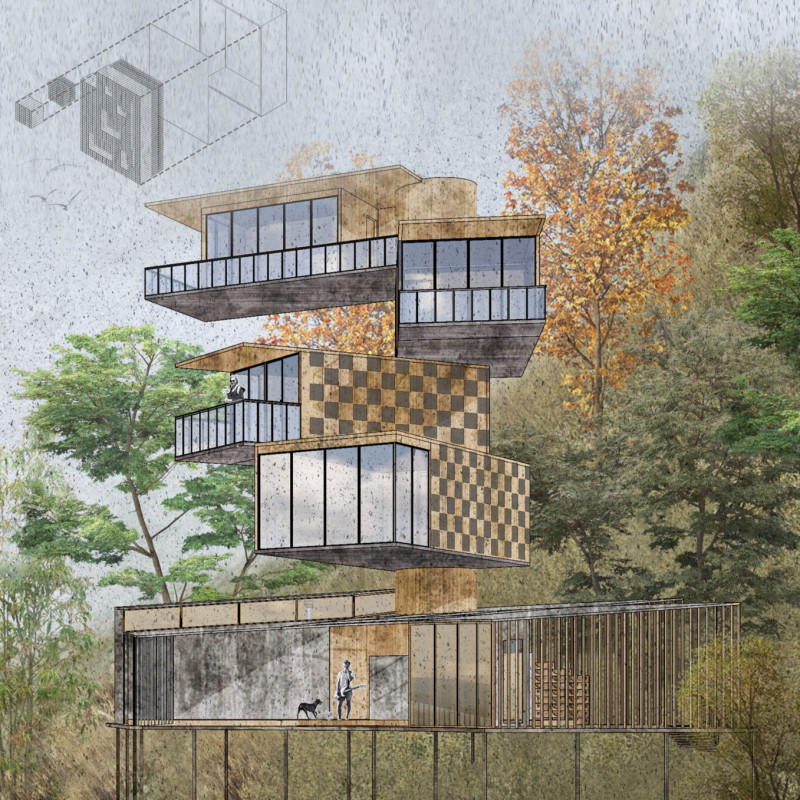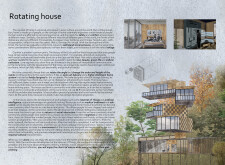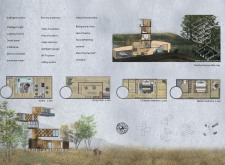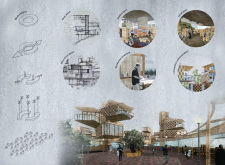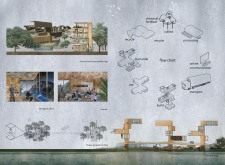5 key facts about this project
The main structure consists of multiple levels that create visual interest through stepped formations. Large expanses of glass facades facilitate natural light penetration while offering unobstructed views of the surrounding landscape. This design maximizes daylight access and encourages energy efficiency, reducing reliance on artificial lighting.
Adaptability is a core theme of the Rotating House. By incorporating intelligent technology, such as smart home systems and environmental monitoring sensors, the design enhances the functionality of the living space. This integration allows inhabitants to adjust their surroundings according to individual preferences and needs, promoting a greater sense of comfort and control.
Innovative Use of Materials
The materials selected for the Rotating House play a crucial role in its overall aesthetic and functionality. A combination of concrete, glass, wood, and recyclable metals results in a modern yet warm residential identity. Concrete provides structural integrity, while glass enhances transparency and visual connectivity. Wood introduces natural textures, promoting a comforting atmosphere within the home. The incorporation of recyclable metals supports sustainability efforts.
The facade of the building utilizes a unique checkerboard pattern, contributing to its distinct character while aiding in thermal performance. This design not only enhances the visual appeal of the architecture but also helps regulate temperature by reflecting sunlight.
Sustainability and Community Focus
The Rotating House addresses contemporary environmental challenges with integrated sustainability features, such as rainwater harvesting systems and efficient waste management strategies. The design promotes ecological responsibility by minimizing resource waste during construction and throughout its lifecycle.
Community engagement is another essential aspect of this project. It encourages social interaction through shared spaces, allowing residents to foster relationships and build a sense of belonging. This thoughtful integration of communal areas acknowledges the increasing need for connection in increasingly urban environments.
To explore more about the Rotating House, including architectural plans, sections, designs, and innovative ideas, consider delving into the available project presentation. This can provide deeper insights into the design’s multifaceted elements and its contribution to modern architecture.


